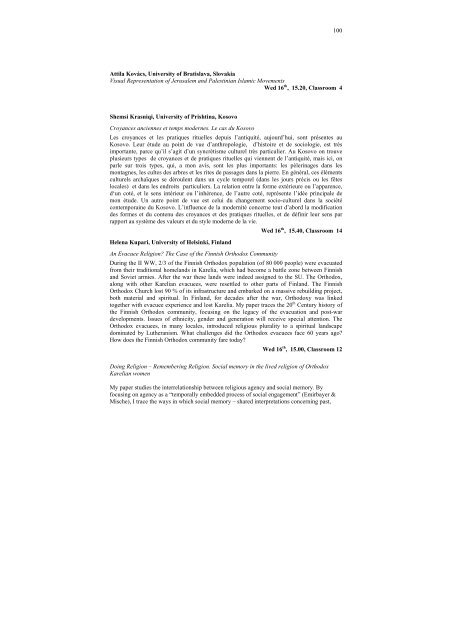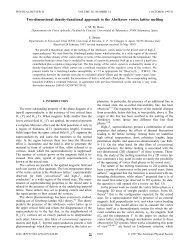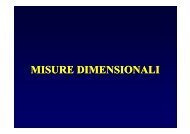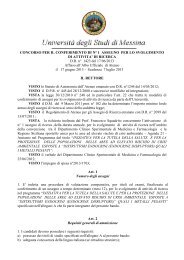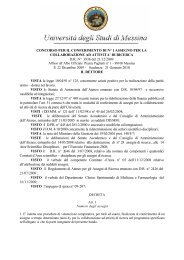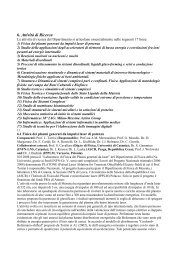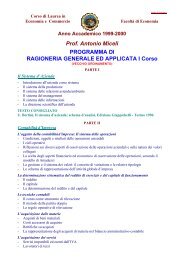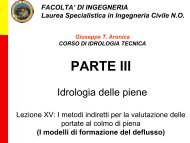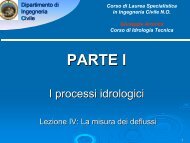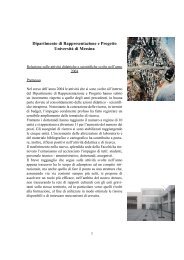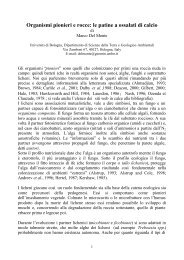PROGRAMME AND ABSTRACTS - Università degli Studi di Messina
PROGRAMME AND ABSTRACTS - Università degli Studi di Messina
PROGRAMME AND ABSTRACTS - Università degli Studi di Messina
You also want an ePaper? Increase the reach of your titles
YUMPU automatically turns print PDFs into web optimized ePapers that Google loves.
100<br />
Attila Kovács, University of Bratislava, Slovakia<br />
Visual Representation of Jerusalem and Palestinian Islamic Movements<br />
Wed 16 th , 15.20, Classroom 4<br />
Shemsi Krasniqi, University of Prishtina, Kosovo<br />
Croyances anciennes et temps modernes. Le cas du Kosovo<br />
Les croyances et les pratiques rituelles depuis l’antiquité, aujourd’hui, sont présentes au<br />
Kosovo. Leur étude au point de vue d’anthropologie, d’histoire et de sociologie, est très<br />
importante, parce qu’il s’agit d’un syncrétisme culturel très particulier. Au Kosovo on trouve<br />
plusieurs types de croyances et de pratiques rituelles qui viennent de l’antiquité, mais ici, on<br />
parle sur trois types, qui, a mon avis, sont les plus importants: les pèlerinages dans les<br />
montagnes, les cultes des arbres et les rites de passages dans la pierre. En général, ces éléments<br />
culturels archaïques se déroulent dans un cycle temporel (dans les jours précis ou les fêtes<br />
locales) et dans les endroits particuliers. La relation entre la forme extérieure ou l’apparence,<br />
d‘un coté, et le sens intérieur ou l’inhérence, de l’autre coté, représente l’idée principale de<br />
mon étude. Un autre point de vue est celui du changement socio-culturel dans la société<br />
contemporaine du Kosovo. L’influence de la modernité concerne tout d’abord la mo<strong>di</strong>fication<br />
des formes et du contenu des croyances et des pratiques rituelles, et de définir leur sens par<br />
rapport au système des valeurs et du style moderne de la vie.<br />
Helena Kupari, University of Helsinki, Finland<br />
An Evacuee Religion? The Case of the Finnish Orthodox Community<br />
Wed 16 th , 15.40, Classroom 14<br />
During the II WW, 2/3 of the Finnish Orthodox population (of 80 000 people) were evacuated<br />
from their tra<strong>di</strong>tional homelands in Karelia, which had become a battle zone between Finnish<br />
and Soviet armies. After the war these lands were indeed assigned to the SU. The Orthodox,<br />
along with other Karelian evacuees, were resettled to other parts of Finland. The Finnish<br />
Orthodox Church lost 90 % of its infrastructure and embarked on a massive rebuil<strong>di</strong>ng project,<br />
both material and spiritual. In Finland, for decades after the war, Orthodoxy was linked<br />
together with evacuee experience and lost Karelia. My paper traces the 20 th Century history of<br />
the Finnish Orthodox community, focusing on the legacy of the evacuation and post-war<br />
developments. Issues of ethnicity, gender and generation will receive special attention. The<br />
Orthodox evacuees, in many locales, introduced religious plurality to a spiritual landscape<br />
dominated by Lutheranism. What challenges <strong>di</strong>d the Orthodox evacuees face 60 years ago?<br />
How does the Finnish Orthodox community fare today?<br />
Wed 16 th , 15.00, Classroom 12<br />
Doing Religion – Remembering Religion. Social memory in the lived religion of Orthodox<br />
Karelian women<br />
My paper stu<strong>di</strong>es the interrelationship between religious agency and social memory. By<br />
focusing on agency as a “temporally embedded process of social engagement” (Emirbayer &<br />
Mische), I trace the ways in which social memory – shared interpretations concerning past,


